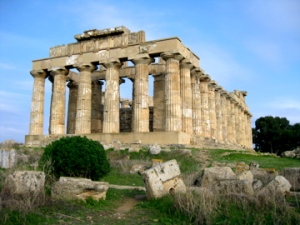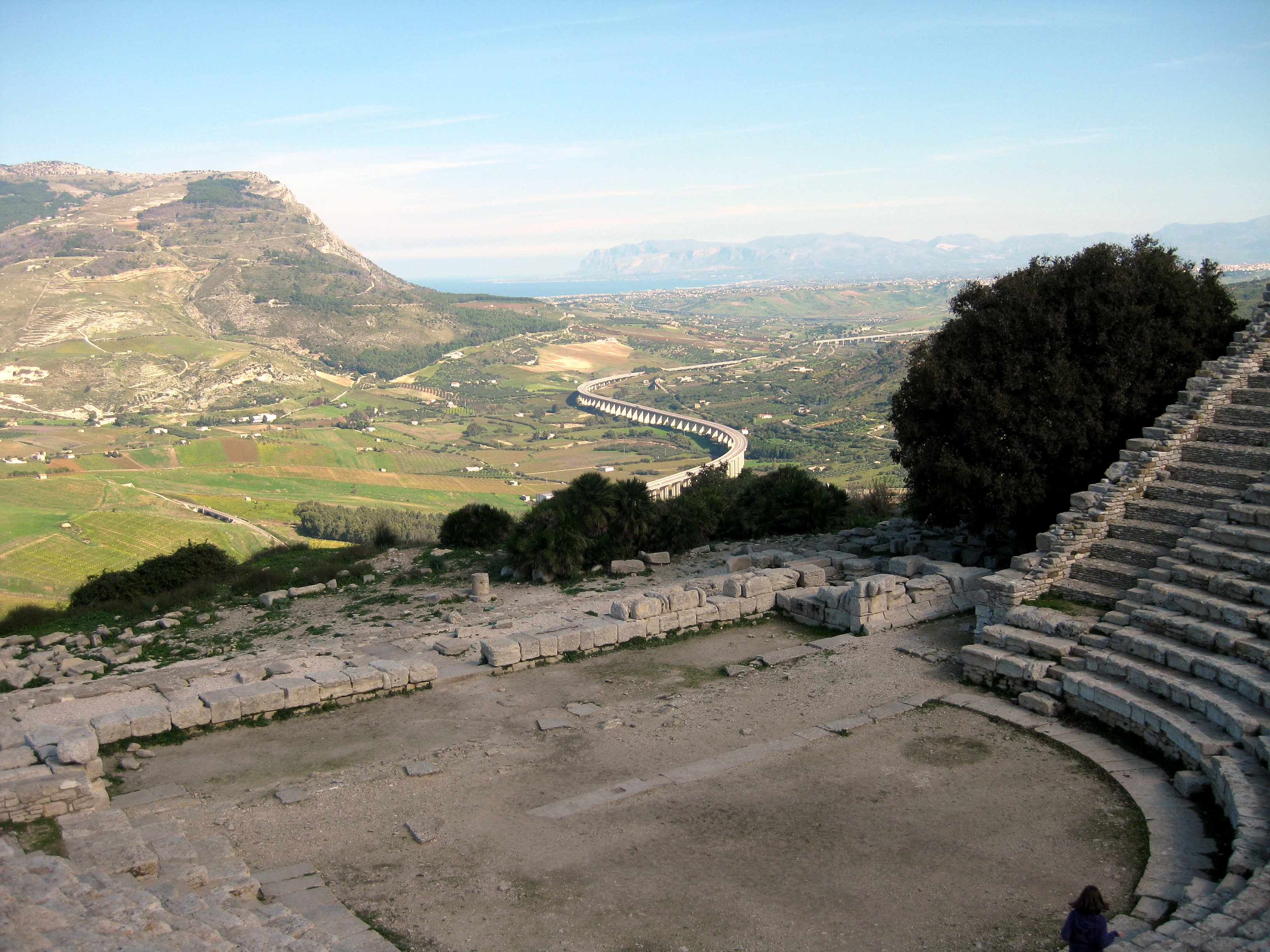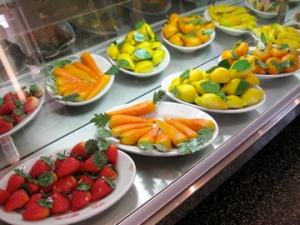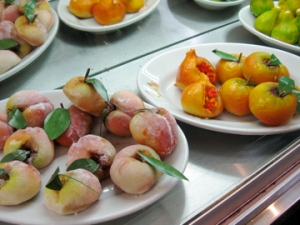
temple at Selinunte
On the way from Palermo to Agrigento, which was our home for the next two nights, the group stopped in the towns of Segesta and Selinunte to see the archaeological sites, which are ruins from the ancient Greek settlement of Sicily. In Segesta, we began at the standing temple and then hiked up to the amphitheater, which (like many Greek amphitheaters at the time), had a stunning natural backdrop: the surrounding countryside, rolling hills and mountains, and a vista that stretched to the sea. Selinunte, also known as the Greek town of Selinus, had extensive archaeological sites, so we got to take a caravan of golf carts in order to get from one to another, making it feel like we were on safari. The temples were in order of increasing ruinedness, and the final larger temple was collapsed in chunks which were fun to climb on–the whole place was like an ancient playground for archaeologists. In keeping with the theme of gorgeous scenery, our tour of Selinunte ended at the acropolis, situated on cliffs over the sea, just as the sun was beginning to set.

view from the amphitheater at Segesta
The next day, we took in the ancient sights of Agrigento, a mid-sized modern city on the southern coast of the island. Here, we spent a morning looking at artifacts up close in the archaeological museum and and afternoon exploring more temples in the scenic “Valle dei Templi.”


Looking at crumbling columns wasn’t the only thing we we did, though. Each evening, we usually got done with our touring between 4 and 6, and had the rest of the day off until the next morning. We were in Italy, so eating naturally played a big part in filling these free hours. Each evening, we would find a place for dinner around 8, and meals would last 2 to 2.5 hours, between bread, wine, antipasti (appetizers), and main dishes. As hard as I tried to diversify the different foods I tried, I averaged about one pizza per day–they were just too good to resist! And these weren’t “I’ll have a slice or two” shared pizzas, these were 16″ one-person-eats-the-whole-thing pizzas with fresh mozzarella and tomatoes, and a thin crust. It was impossible to order something bad. Aside from the usual cheese and bread, Sicilian food featured lots of citrus, seafood (especially swordfish and anchovies), and eggplant. For dessert, there was the unbeatable gelato, freshly-filled cannoli (pastry shell filled with sweet ricotta), and, in every bakery window, elaborate marzipan creations. Molto delizioso!






Hey Hannah! I luv your pics and updates! something interesting to read during my boring day at work!